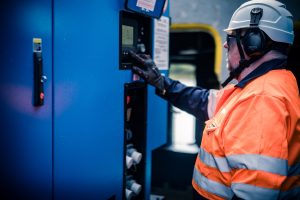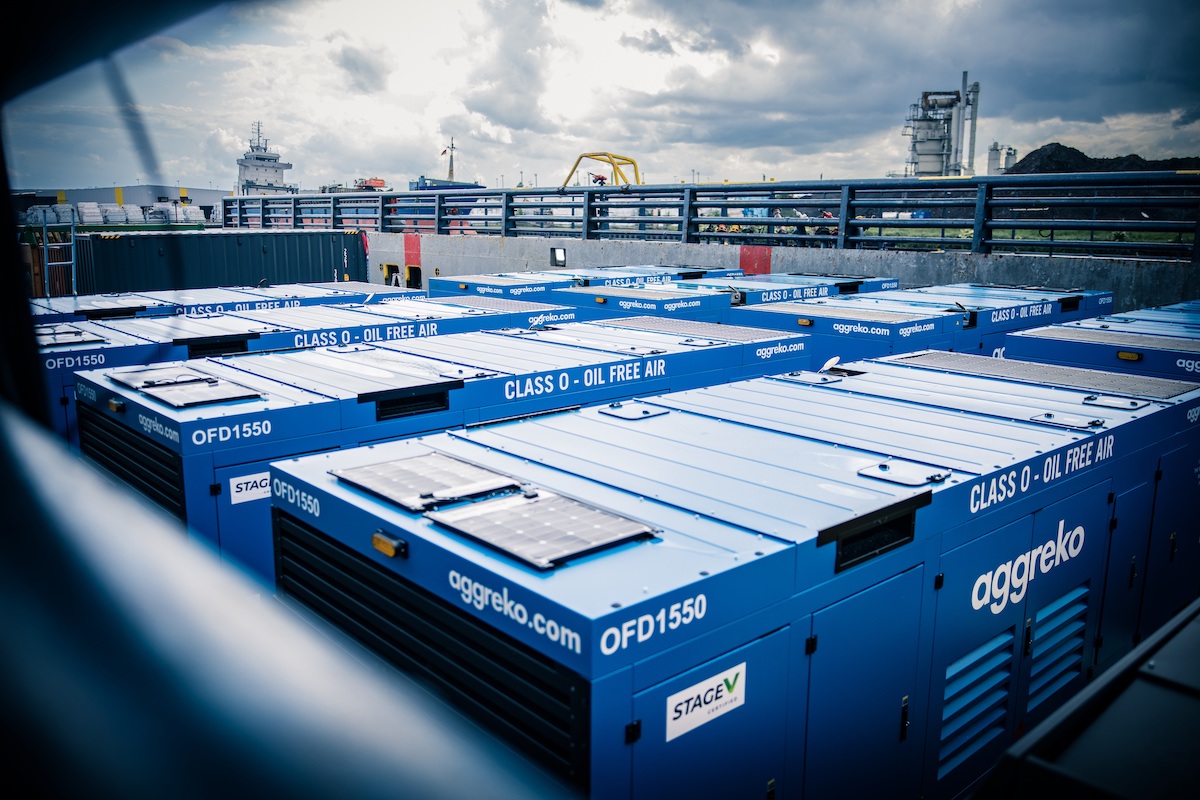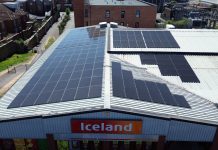Bubble curtains play a critical role in mitigating noise emissions, protecting marine ecosystems and enhancing safety during underwater construction activities. With reliability and environmental compliance of the essence, Michel Maaskant, Renewable Energy Specialist for Aggreko, outlines the important role oil-free air compressors play in successfully deploying bubble curtains.
While they may be hidden from plain sight, bubble curtains couldn’t be more important when it comes to safeguarding marine ecosystems and mitigating noise emissions during various underwater activities.
The primary role of a bubble curtain is to absorb and disperse sound produced by ships and offshore wind construction, minimising disruption and protecting marine mammals and fish from harmful noise levels. Before diving any further into the benefits bubble curtains can provide in aquaculture settings, let’s outline how they are created and their various applications.
Building bubble curtains
Firstly, pipes are laid on the seabed around a site, with a perforated hose connected to the compressors, which provide clean, oil free air to the circuit. The airflow rate and pressure are both adjusted to achieve the desired bubble size and density. Diffusers positioned on the seabed release compressed air as bubbles into the water.
The bubbles then alter the water’s density, creating a sound barrier to manage water quality, protect marine life and control noise pollution. Double or triple bubble curtains may also be used for enhanced noise mitigation.
Location, location, location
Bubble curtains are deployed in various marine construction and other underwater activities within the offshore sector. Alongside offshore wind construction and shipping, they can help contain and control the spread of sediments during dredging operations, preventing them from muddying surrounding waters. As a result, this protects sensitive marine ecosystems, such as coral reefs, from being layered with fine particles. The same can be said for subsea pipeline installations, whereby bubble curtains are used to manage the displacement of water and sediments.
Other applications include during pile driving to restrict noise created by installing offshore platforms, and underwater welding to create a dry work environment and for ice buildup prevention in cold climates. They can even be used to contain and control oil spills. Here, oil is gathered into a concentrated area, allowing for decontamination and recovery methods to be implemented easily.
In addition to limiting noise emissions, bubble curtains can also reduce algae growth and increase oxygen levels to safeguard marine life and improve overall water quality. The former is achieved by preventing jellyfish from entering fish pens.
Rules and regulations
 Stringent environmental regulations also mandate the installation of bubble curtains in several key regions of the offshore wind industry. While the North Sea, for instance, houses over 40 offshore wind farms[1] and almost 200 oil platforms[2], it is also home to endangered marine species, such as bottlenose dolphins and harbour porpoises.
Stringent environmental regulations also mandate the installation of bubble curtains in several key regions of the offshore wind industry. While the North Sea, for instance, houses over 40 offshore wind farms[1] and almost 200 oil platforms[2], it is also home to endangered marine species, such as bottlenose dolphins and harbour porpoises.
As a result, strict environmental rules are in place to ensure that any underwater construction activities must be conducted in a safe and environmentally friendly manner. The Offshore Petroleum Activities Regulations (2001) stipulates that projects likely to have a significant effect on protected sites must undergo an assessment to evaluate their potential impact on conservation objectives.[3] Similar regulations can be found in both the Baltic and Mediterranean Seas, with particularly stringent rules designed to prevent oil pollution.
Ensuring compliance
When it comes to ensuring environmental compliance with bubble curtains, oil-free air compressors eliminate the need for airborne oil and prevent the risk of oil contamination during critical processes such as offshore wind farm construction, oil and gas exploration and underwater drilling, protecting marine life in the process. Crucially, Aggreko’s range of oil-free air compressors meets the strict ISO 8573-1 Class 0 certification, assuring the highest level of air purity required for sensitive applications like bubble curtains.
Oil-free air compressors are engineered to optimise efficiency, reducing energy consumption and operational costs associated with bubble curtains. For instance, Aggreko’s electric VSD-driven compressors offer emission-free operations, while its diesel-powered solutions are Stage-V-certified, making them the ideal temporary modular solution, short or long term, for those tasked with achieving ambitious emission reduction targets.
A helping hand
When it comes to specifying oil-free air compressors to work alongside bubble curtains, third-party expertise can be a real helping hand, particularly to the growing number of decisionmakers facing staff and subsequent skills shortages. Aggreko’s engineering team offers extensive sector-specific knowledge, with the ability to deliver robust oil-free air compressors adaptable to various project sizes and air demands.
Stakeholders also have the chance to implement a 24/7 remote monitoring system, which enables greater control over utility provision. The Aggreko Remote Monitoring (ARM) service offers real-time insights into the air compressor’s performance and alerts operators of any issues well before they risk bringing processes to a halt.
While it’s safe to say that bubble curtains are an indispensable tool in underwater environments, oil-free air compressors are arguably just as important in ensuring these systems operate efficiently and without the risk of environmental contamination. By leveraging solutions like those provided by Aggreko, decision makers can ensure their projects cross the finishing line all while safeguarding marine life.
Discover more about Aggreko’s range of oil-free air compressors.
[1]https://www.sciencedirect.com/science/article/pii/S2352484722021795#:~:text=The%20North%20Sea%20is%20an%20area%20where%20several%20wind%20farms,number%20of%20approximately%202630%20turbines.
[2] https://www.sciencedirect.com/science/article/pii/S0308597X23001562
[3] https://www.legislation.gov.uk/uksi/2001/1754/regulation/5




